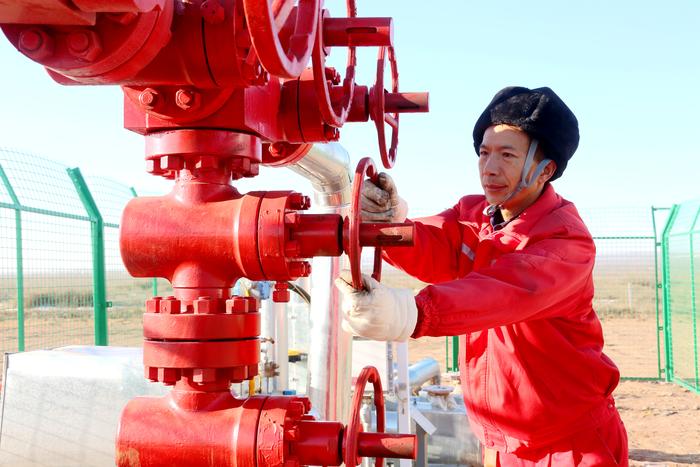|
| 2020-12-23 来源: 中国石化新闻网 |
| 石化新闻 |
中国石化新闻网讯 据石油新闻休斯敦报道,海恩斯和布恩(Haynes & Boone)律师事务所在12月17日的一份报告中称,今年北美地区共有45家上游企业申请破产,这是自6年前油价暴跌至50美元/桶以来美国上游企业申请破产第二高的数字。 这家自2015年初以来一直在跟踪能源企业破产情况的国际著名律师事物所表示,只有2016年能源企业申请破产数超过了今年,达到了70家。 在2020年第4季度提交破产申请的公司包括MD 美国能源公司、Finger油气公司、Onpoint 油气公司、Gulfport能源公司和Canaan资源公司。 虽然这些申请破产公司中的大多数公司是私人控股的,但今年,一些业内最大的生产商申请了破产,包括怀廷石油公司在4月、Unit 公司在5月、切萨皮克能源公司在6月和绿洲石油公司在9月先后申请破产。 在申请破产公司数量方面,紧随其后的是2015年有44家公司。2017年和2018年分别为24家和28家。2019年,有42家公司申请破产。Fieldwood 能源公司和Chaparral 资源公司等一些公司已经不止一次提交了破产申请。 2014年末,油价从当年早些时候的100美元/桶下跌。当年11月,欧佩克拒绝限制石油生产,这很可能抬高了油价。相反,欧佩克的行动让世界充斥着过剩的石油,迫使原油价格下跌一半,最后甚至更低。 许多石油公司在2015年遭受了油价突然下跌至多年未见的水平的沉重打击,最初它们能够坚持住。但最终,资金短缺迫使它们在重组债务、出售资产或出售公司时,依法申请破产保护。 2016年,WTI原油价格在年初为30美元/桶,甚至两次短暂下跌至20美元/桶,这使得更多已经在应对一年相对较低油价的上游公司陷入了财务不稳定的境地。 2017年,油价稳定在50美元/桶左右,2018年升至70美元/桶,2019年保持在50美元/桶至60美元/桶,结果,申请破产保护的公司数量减少了。但今年早些时候的冠状病毒疫情大流行导致原油价格暴跌至30美元/桶,然后是20美元/桶,再后来是十几美元/桶。 自6月底以来,原油价格一直在每桶40美元左右,而在过去几周里,由于开始分发新冠病毒疫苗,西德克萨斯中质原油的价格已经超过了45美元/桶。 纽约商品交易所西德克萨斯中质原油12月17日报收于48.44美元/桶,上涨了62美分。 李峻 编译自 石油新闻 原文如下: North America posts 45 upstream bankruptcies in 2020 A total 45 bankruptcies in the North American E&P patch were filed in 2020, the second-highest number since oil prices abruptly plummeted to the $50/b level six years ago, Haynes & Boone said in a Dec. 17 report. The international law firm, which has tracked energy bankruptcies since since early-2015, said this year's number was only exceeded by 2016 with 70. Companies that filed in fourth-quarter 2020 included MD America Energy, Finger Oil & Gas, Onpoint Oil & Gas, Gulfport Energy Corp and Canaan Resources. While most of those were privately held operators, 2020 saw some of industry's biggest producers file for bankruptcy including Whiting Petroleum in April, Unit Corp in May, Chesapeake Energy in June and Oasis Petroleum in September. Trailing this year very narrowly in terms of bankruptcies was 2015 with 44. Years 2017 and 2018 were fairly placid, with 24 and 28 respectively. Last year, 42 bankruptcies were filed. Some companies, such as Fieldwood Energy and Chaparral Resources, have filed more than once. In late 2014, oil prices had been on their way down from levels over $100/b earlier in that year. That November, OPEC refused to restrict oil production which would likely have lifted the price. Instead, the cartel's move left the world awash in excess oil, forcing down crude prices by half and eventually even still lower. Many oil companies that were hit hard in 2015 from the sudden drop in oil prices to levels not seen in years at the time, were able to hold on initially. But eventually a cash crunch forced them to legally file for protection while restructuring debt, selling assets or offering themselves for sale. During 2016, WTI oil prices began the year in the $30s/b and even dipped briefly in the $20s/b twice, putting an even larger number of upstream companies which were already coping with a year's worth of relatively low oil prices in a financially precarious position. Prices stabilized around the $50/b level in 2017, rose into the $70s/b in 2018, and stayed in the $50/b to $60/b in 2019. As a result, there were a lesser number of bankruptcies. But the coronavirus pandemic earlier this year caused prices to plunge to the $30s/b, then $20s/b, and then the teens. Since late June they have been around $40/b, and in the last few weeks as a vaccine for the virus began to be distributed, WTI prices have been above $45/b. NYMEX WTI settled Dec. 17 at $48.44/b, up 62 cents. |








